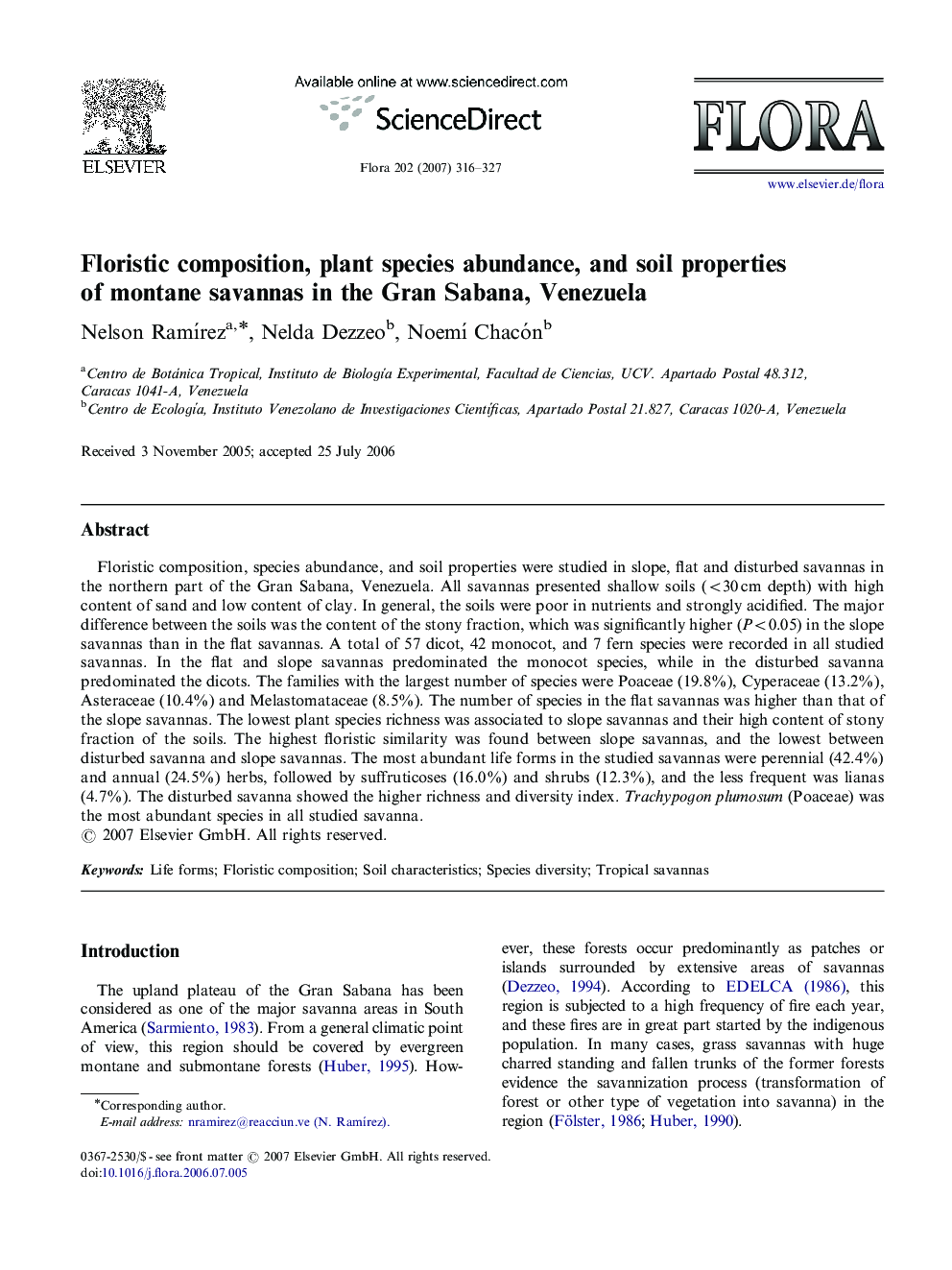| Article ID | Journal | Published Year | Pages | File Type |
|---|---|---|---|---|
| 2180412 | Flora - Morphology, Distribution, Functional Ecology of Plants | 2007 | 12 Pages |
Floristic composition, species abundance, and soil properties were studied in slope, flat and disturbed savannas in the northern part of the Gran Sabana, Venezuela. All savannas presented shallow soils (<30 cm depth) with high content of sand and low content of clay. In general, the soils were poor in nutrients and strongly acidified. The major difference between the soils was the content of the stony fraction, which was significantly higher (P<0.05) in the slope savannas than in the flat savannas. A total of 57 dicot, 42 monocot, and 7 fern species were recorded in all studied savannas. In the flat and slope savannas predominated the monocot species, while in the disturbed savanna predominated the dicots. The families with the largest number of species were Poaceae (19.8%), Cyperaceae (13.2%), Asteraceae (10.4%) and Melastomataceae (8.5%). The number of species in the flat savannas was higher than that of the slope savannas. The lowest plant species richness was associated to slope savannas and their high content of stony fraction of the soils. The highest floristic similarity was found between slope savannas, and the lowest between disturbed savanna and slope savannas. The most abundant life forms in the studied savannas were perennial (42.4%) and annual (24.5%) herbs, followed by suffruticoses (16.0%) and shrubs (12.3%), and the less frequent was lianas (4.7%). The disturbed savanna showed the higher richness and diversity index. Trachypogon plumosum (Poaceae) was the most abundant species in all studied savanna.
